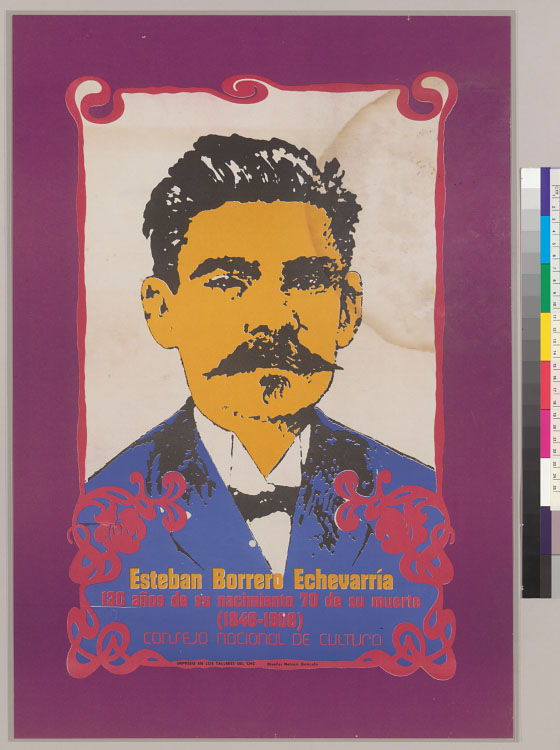3.1.1 The cultivation of poetry by Esteban Borrero (1849 – 1906)

Esteban Borrero’s poetry was above all a search for beauty through pain, more in his lifestyle than in the formal construction of his verses. His forays into the world of poetry began with a book of poems he published in 1878, for which no reference has been found beyond its satirical tone. The following year, some of his verses would appear in the anthology “Arpas amigas.”
Julián del Casal would say: “If the prose writer is admirable, so is the poet. Feeling predominates in all his compositions. (…) All the wounds his soul received in the world bleed in his rhymes. (…). Beneath the peplos of his muse, resembling a modern Cleopatra, is the viper of doubt distilling its venom that seeps inward like acid dissolved in the heart of a marble. Of all the qualities that beautify this muse, the most outstanding, or rather, the one I like the most, is that for her only the inner world exists. She lives focused on herself, like a pearl in its shell, never worrying about what worries others. And yet, she is very modern. She always carries the nostalgia for something great, for something that does not know what it is, but that is certainly not within creation.”
Esteban Borrero subscribed above all to modernism and welcomed Casal’s influence, despite the fact that the latter was younger. They shared vital and lyrical obsessions and, in a certain sense, constituted a spiritual refuge for Casal.
The deaths of several members of his family, especially that of his daughter Juana, overshadowed his poetic expression, evident in his composition “De lo más íntimo” (Of the Most Intimate), full of a desolate melancholy, from which he sought refuge in his independence campaigns since emigration, driven by an ideal higher than his own life.
Of a rather modernist imprint is his poem “Primavera” in which he establishes a contrast between the material realm of spring – and spiritual by extension, given the emotional connotation that it gives to the landscape in a still romantic treatment of nature – and his physical and emotional state, no longer incapable of feeling the blows of joy except as a great pain by contrast:
“Voluptuous aromas
They reach my senses.
The sun shines brighter,
Fire boils in my veins.
It seems to be throbbing
The air that surrounds me,
That trembles at the passing
Of the bird that flutters. (…)
From my sudden fainting spell
I return at last, and they surround me
Frowning realities,
Overwhelming sorrows.
I look around at thistles,
Cruel doubt haunts me…
Save it for other breasts
Your charm, spring;
May other souls enjoy you:
Mine is already dead!
Although he was not a notable poet, his lyrical contributions are interesting for accessing the creative side of his exemplary personality, at once firm and humble, committed to the independence movement from a consistent patriotism, but without losing his intellectual and emotional uniqueness.
José Lezama Lima noted that Borrero’s poetry did not reach the level of plenitude of his prose work, although it did offer glimpses of “a tormented and powerful expression” that was significant. He also mentions that he was “the founder of a home where poetry appeared strange and fascinating,” alluding both to the literary gatherings he organized at his residence in Puentes Grandes and to the cultural haven where he raised his daughters, all of which fueled the rise of modernism in Cuban poetry.








